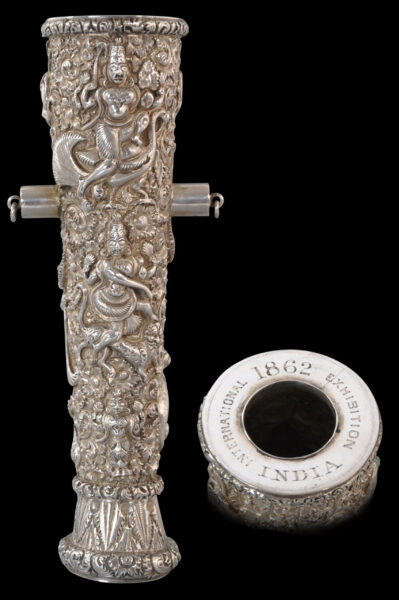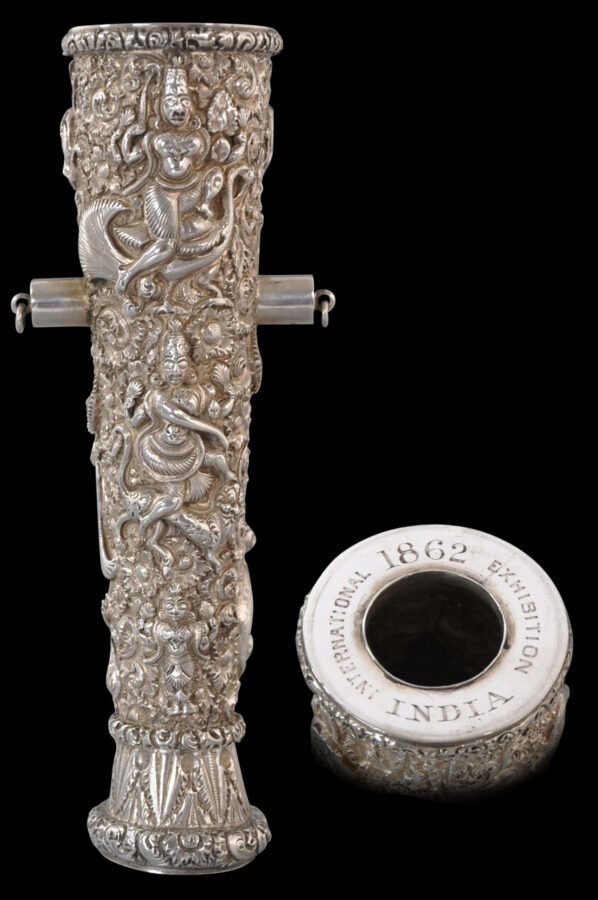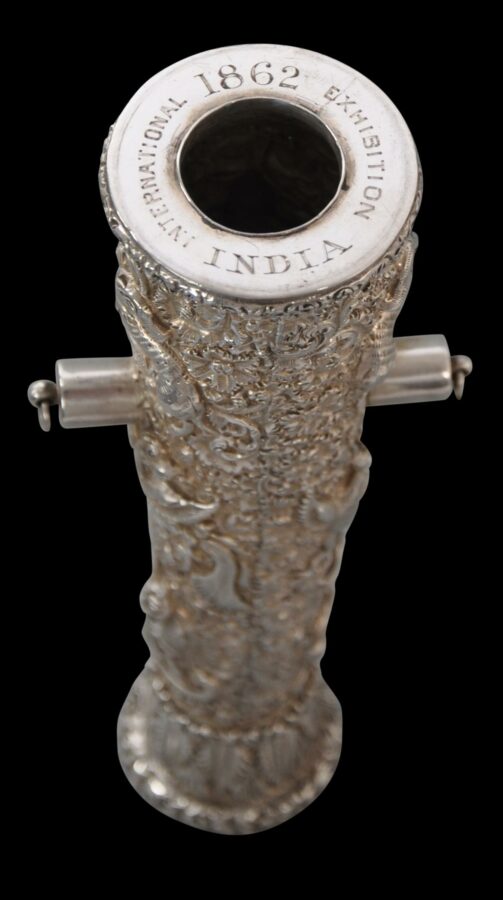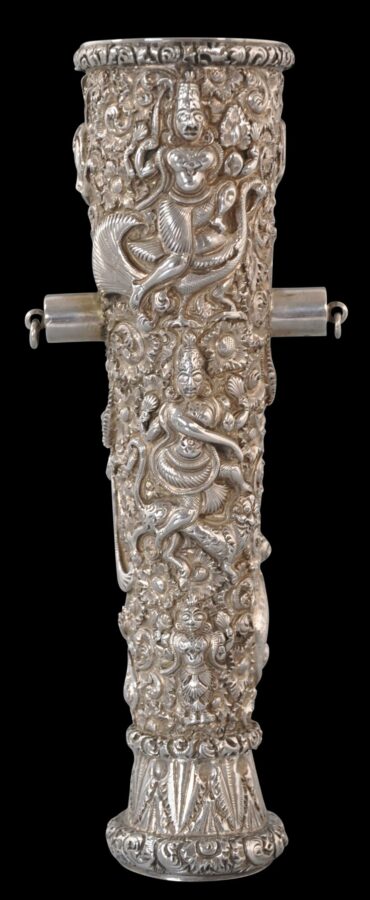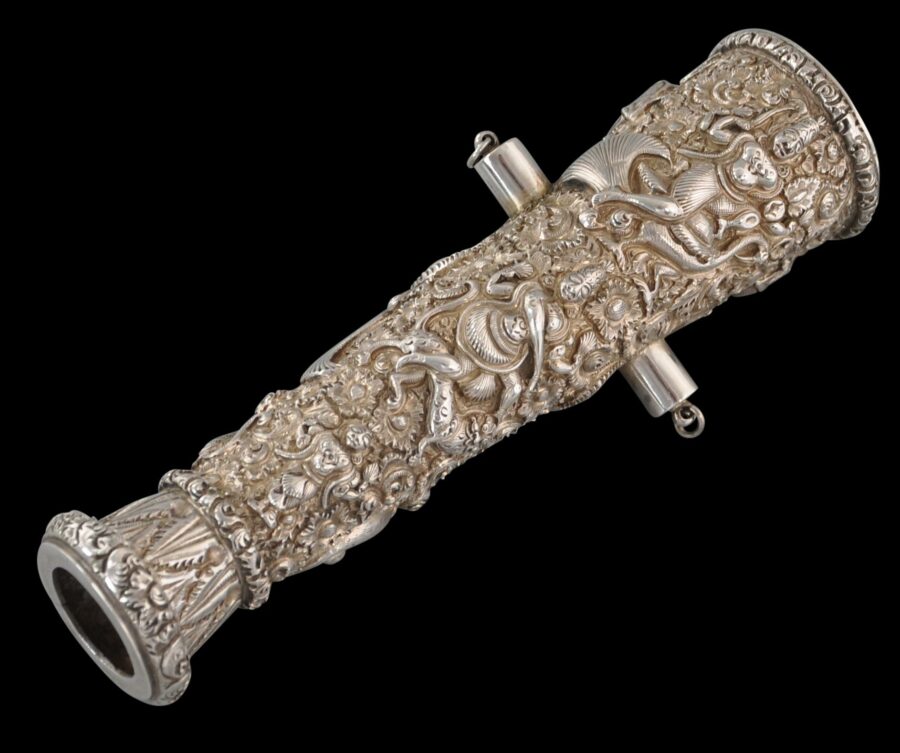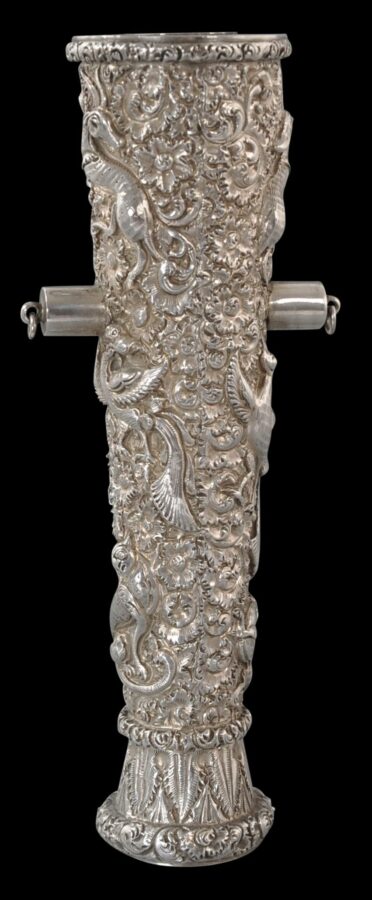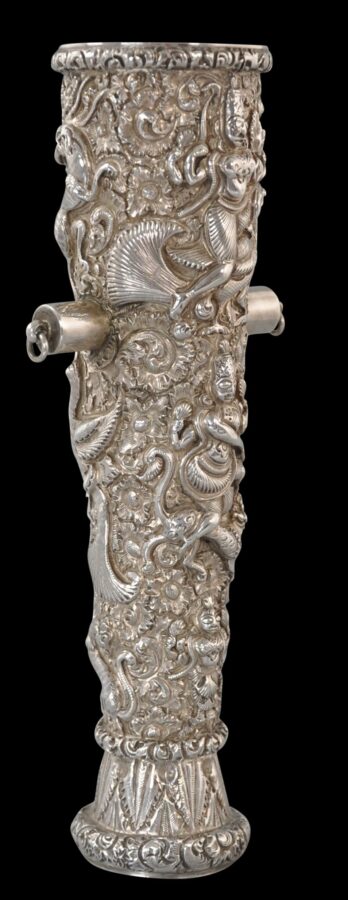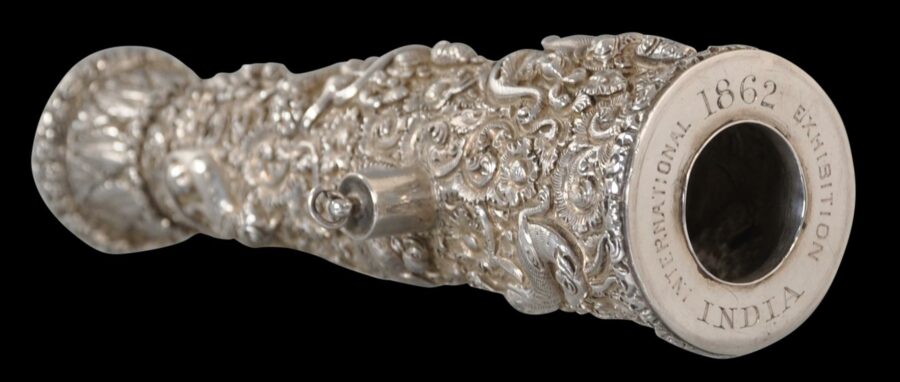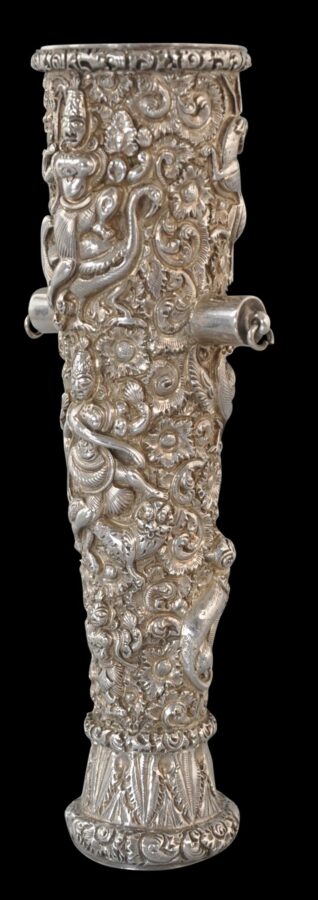The canon-shaped tube was made for the India stand at the International Exhibition staged in London in 1862 and the top is engraved with the words ‘International Exhibition / India / 1862’.
Being an exhibition piece, it is of superb craftsmanship.
It was intended to function as a tinder tube. Such tubes were designed by hold a segment of combustible fabric or rope which would be lit and used to light the fuses of canons. It is likely that this example however, made for the colonial market, probably was intended to be passed around to light gentleman’s cigars after dinner.
It is profusely and very finely decorated in sharp, high relief with Hindu deities and their celestial vehicles (vahana) as well as elegant yali-type creatures all amid tightly-packed flowers and foliage, in a manner that is particularly typical of colonial Trichinopoly silverwork.
The item tapers inwards as the mouth is reached where it flares slightly and is engraved with an acanthus leaf border.
Two short arms are emitted from each side, each with a small loop. These emulate the arms found on cannons to allow them to rest on a mount, but in this case would have permitted the item to be attached perhaps to a chain.
Trichinopoly (known as Tiruchirappalli today) is the former French concession of South India. Although less than 350 kilometres from Madras, but under the British East India Company and later, British colonial administration, its silversmiths developed a unique style that incorporated the ‘swami’ style of Madras with incredibly dense and fine floral and foliage relief work. The silver and gold items produced in Trichinopoly tended to be small, luxurious items such as snuff boxes and perfume bottles. Trichinopoly silverwork is relatively rare among colonial Indian silverwork.
The International Exhibition of 1862, or more formally, the London International Exhibition of Industry and Art, also known as the Great London Exposition of 1862, was a world’s fair held from May 1 to November 1, 1862 on the site in South Kensington, London, that now houses the Victoria & Albert Museum, the Natural History Museum and the Science Museum. It was staged by the British Government after the huge success of the Great Exhibition of 1851 and featured and featured over 28,000 exhibitors from 39 countries, in the fields of industry, technology, and the arts.
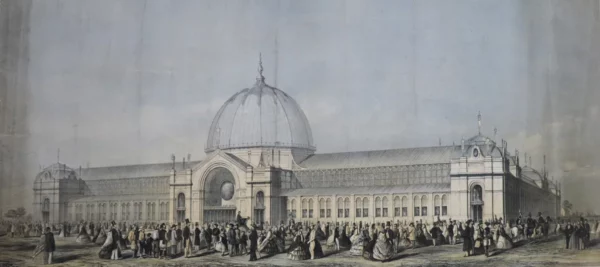
Above: the International Exhibition building, London, 1862
References
Dehejia, V., Delight in Design: Indian Silver for the Raj, Mapin, 2008.
Terlinden, C., Mughal Silver Magnificence, Antalga, 1987.
Wilkinson, W.R.T., Indian Silver 1858-1947, 1999.


